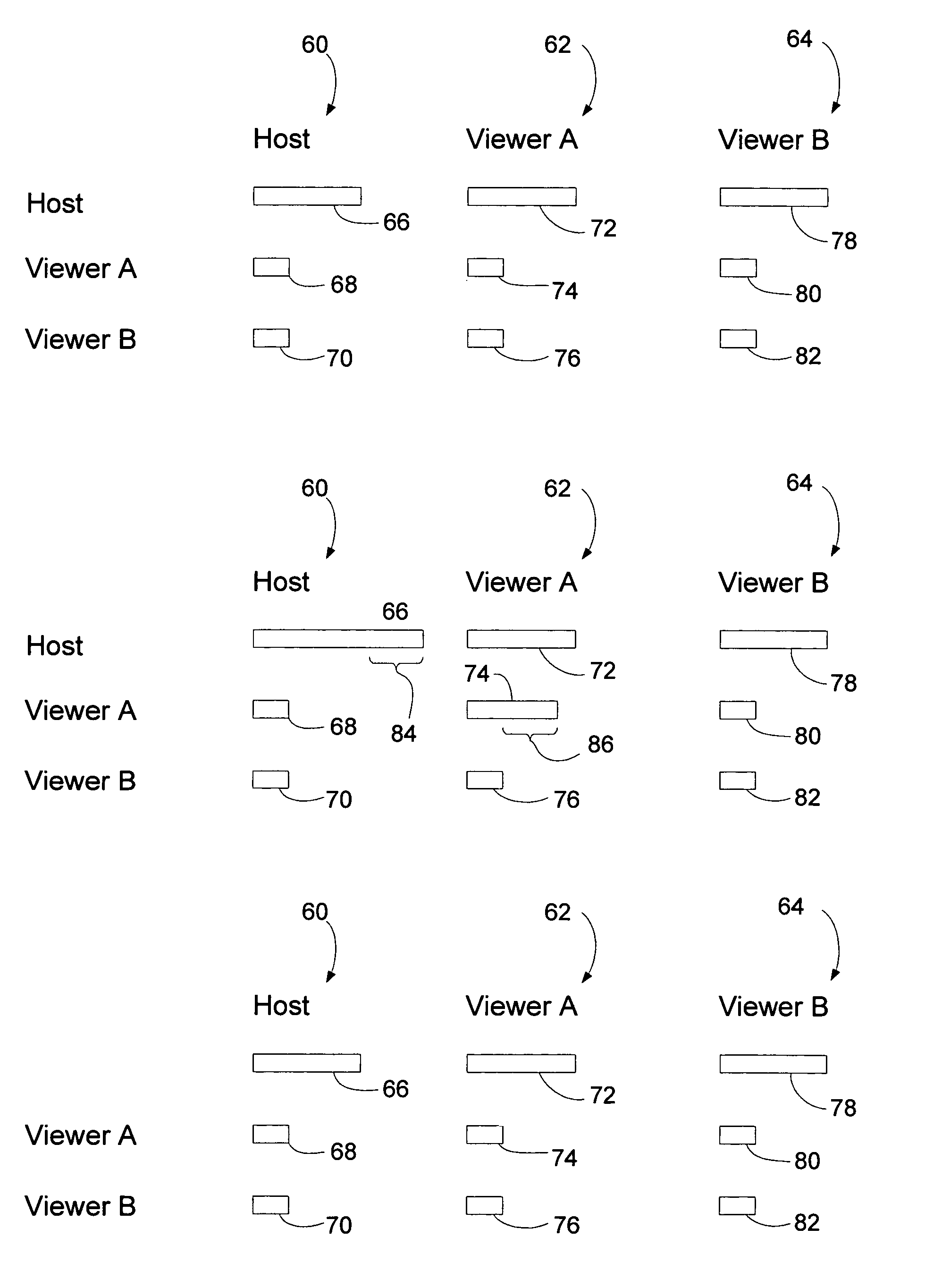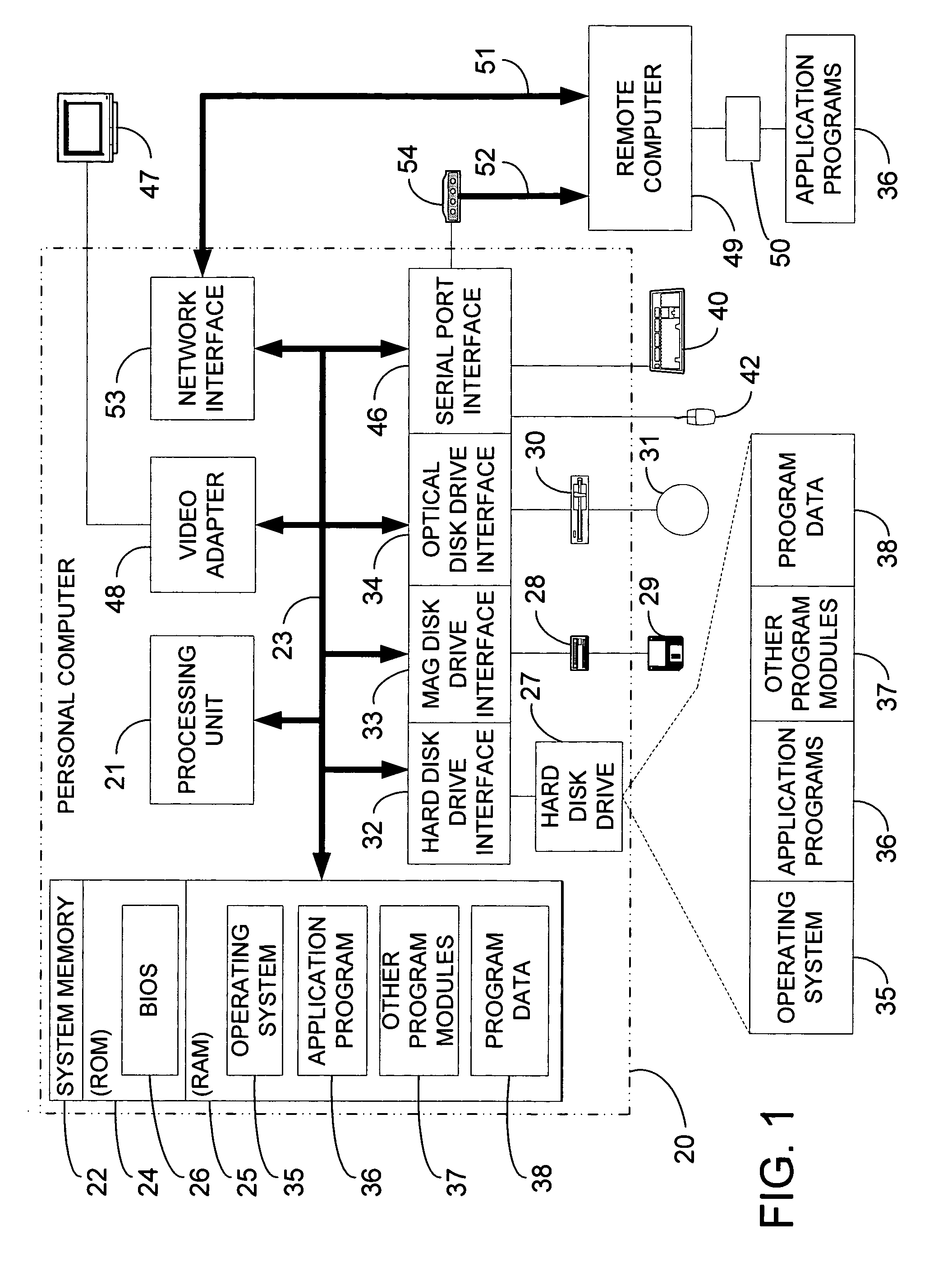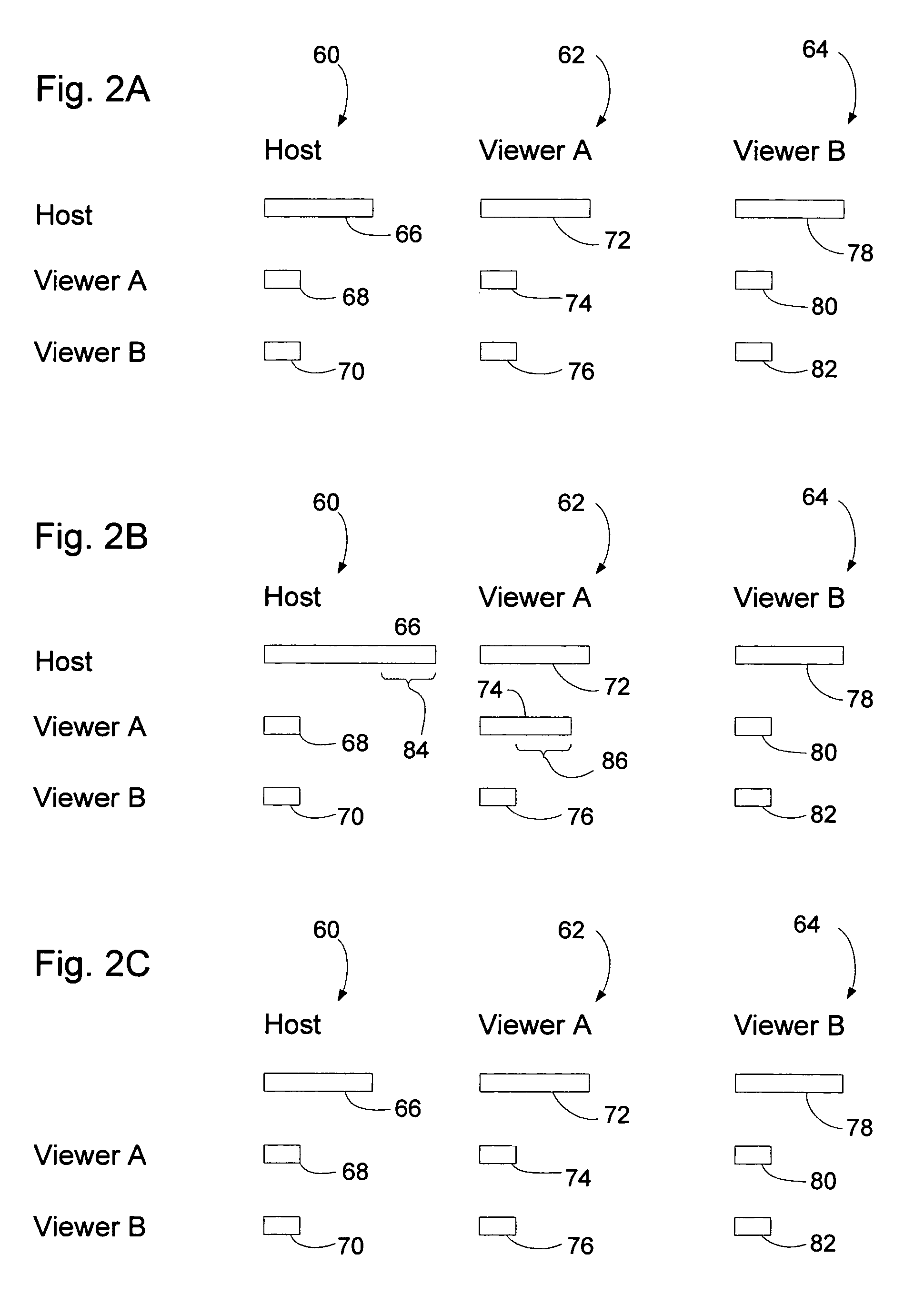Scalable multiparty conferencing and collaboration system and method of dynamically allocating system resources in same
a multi-party conferencing and collaboration system technology, applied in multi-programming arrangements, instruments, data switching networks, etc., can solve the problems of reducing the network resource and time utilization of this tool, excessive delay in communication and interruption of meetings, and limit beyond, so as to increase the functionality and ease of use of network conferencing tools, reduce network traffic, and increase scalability
- Summary
- Abstract
- Description
- Claims
- Application Information
AI Technical Summary
Benefits of technology
Problems solved by technology
Method used
Image
Examples
Embodiment Construction
[0030]FIG. 1 in the following discussion are intended to provide a brief, general description of a suitable computing environment in which the invention may be implemented. Although not required, the invention will be described in the general context of computer-executable instructions, such as program modules, being executed by a personal computer. Generally, program modules include routines, programs, objects, components, data structures, etc. that perform particular tasks or implement particular abstract data types. Moreover, those skilled in the art will appreciate that the invention may be practiced with other computer system configurations, including hand-held devices, microprocessor systems, microprocessor-based or programmable computer electronics, network PCs, minicomputers, mainframe computers, and the like. The invention may also be practiced and distributed computing environments where tasks are performed by remote processing devices that are linked through a communicati...
PUM
 Login to View More
Login to View More Abstract
Description
Claims
Application Information
 Login to View More
Login to View More - R&D
- Intellectual Property
- Life Sciences
- Materials
- Tech Scout
- Unparalleled Data Quality
- Higher Quality Content
- 60% Fewer Hallucinations
Browse by: Latest US Patents, China's latest patents, Technical Efficacy Thesaurus, Application Domain, Technology Topic, Popular Technical Reports.
© 2025 PatSnap. All rights reserved.Legal|Privacy policy|Modern Slavery Act Transparency Statement|Sitemap|About US| Contact US: help@patsnap.com



